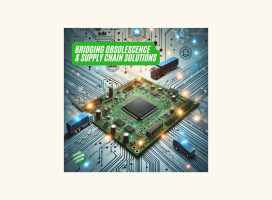The Role of Legacy Equipment in Modern Industrial Applications
Industrial automation has become more and more crucial throughout the manufacturing world. Robotics have expanded from simply material handling and movement to actually performing certain tasks, like assembly and welding, and they are only growing more sophisticated with each year. In a time of diminishing resources and increasing demand, automation offers new opportunities for many manufacturing companies to stay competitive on a wider scale.
However, just like with any other part of the exponentially growing field of technology, industrial automation systems are experiencing an increase with reliance on legacy equipment–machines with embedded electronics systems that are crucial for everyday operations, but have been discontinued by their OEM. For some, trying to upgrade to newer systems isn’t just too expensive, but also incompatible with their existing equipment, whether because of the mechanical design or software incompatibility.
And, as these critical automation systems age, the components used to make them are more difficult to find. Requalification testing, component reliability, counterfeits–all of these issues become much more of a problem as the system ages. Just finding one obsolete part that is actually form, fit, and functionally compatible with the system can take a long time and a lot of resources.
Hence the need for second sources of supply for these critical automation systems. In the past the only choices were companies that offer legacy equipment sales, such as an OEM distributor selling leftover stock or another offering used parts. But these options rarely offer more than a quick fix (if you can find them) and rarely do they help satisfy the lifecycle requirements for the obsolete part. However today there are also legacy equipment manufacturers (LEMs), companies that manufacture obsolete or discontinued electronics systems that are crucial for equipment for years after they’ve been discontinued by the OEM.
Sustainment of legacy industrial and automation equipment is important. These existing systems are the backbone of modern industrial automation, and are often required for years beyond the point where they are discontinued. They control valuable operations in manufacturing equipment, robotics, industrial automation lines, store crucial information, and ensure quality and performance. Legacy equipment manufacturers, especially those certified by the OEMs, produce embedded circuit boards, components, and systems that are form, fit, and functionally the same as the original.
LEMs offer real alternatives to expensive upgrades and new equipment purchases, ones that allow you to maintain existing legacy equipment and systems that are important even in modern-day industry. All you have to do is look for those options.




